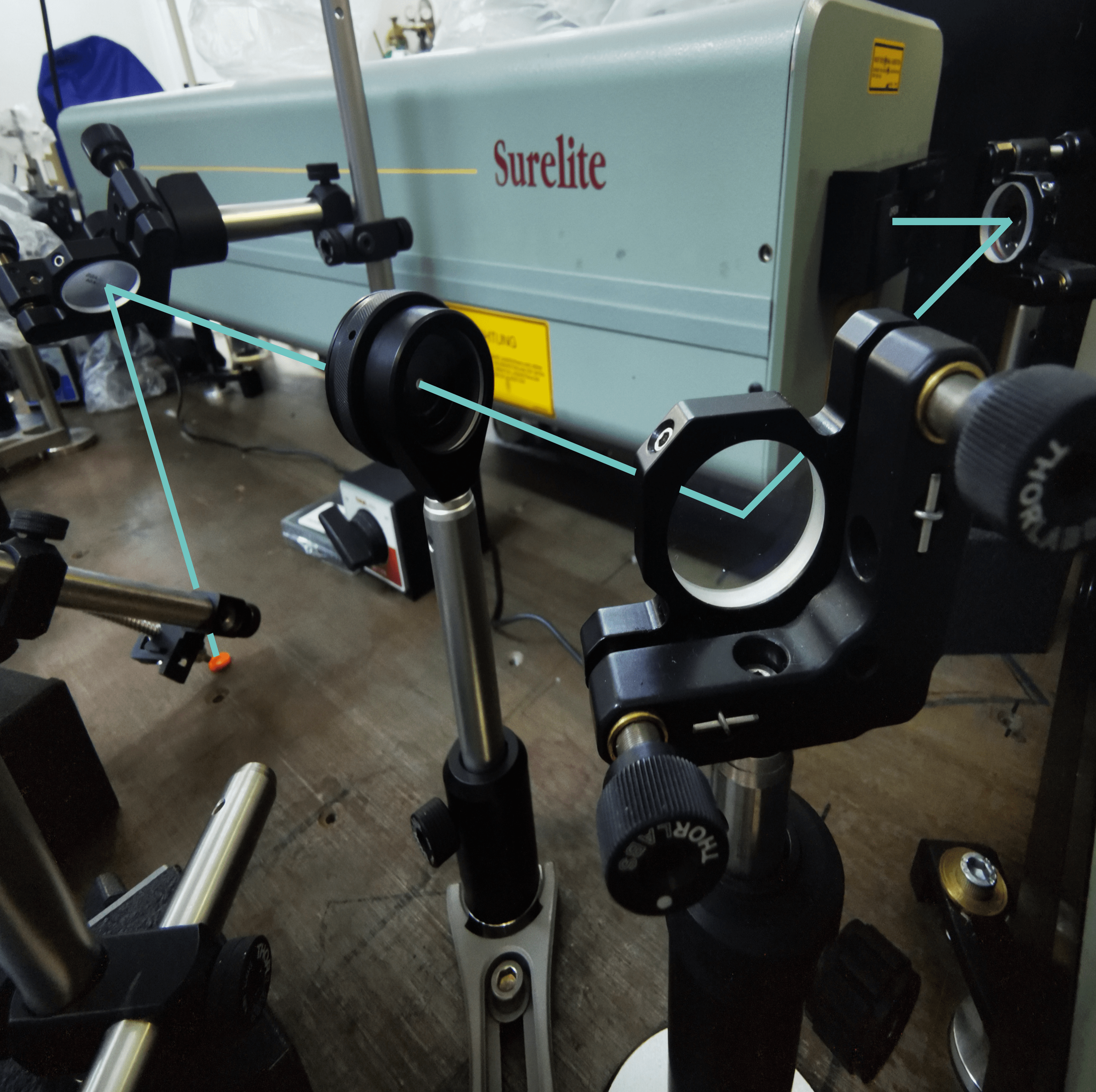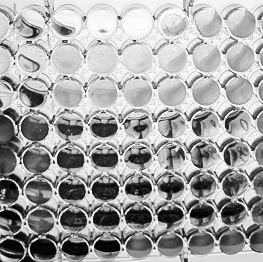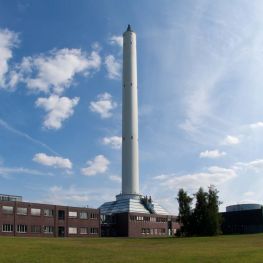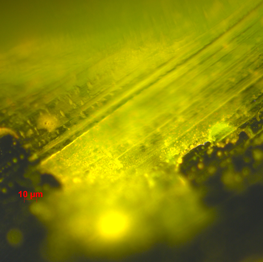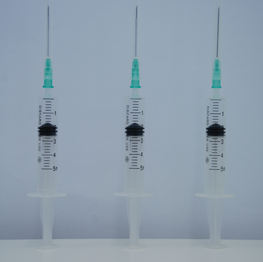Finished Projects
Projects
Finished Projects
Spectroscopy InterferometryChlorpromazine loading and irradiation into hydrogels by UV laser radiation, as alternative to bacterial infected wound treatment
The number of drug-resistant bacteria is currently growing up, and the possibilities for successful treatment are narrow due to the lack of solutions in eradicating them. To overcome the emergence of multiple drug-resistant bacteria it is necessary to identify new approaches in using the existing drugs and to find ‘smart’ drug delivery systems. The discovery of compounds with direct antimicrobial effects obtained by laser irradiation of a drug is a further step in filling the gap created in antimicrobial research and represents a new approach in chemistry, biology, and pharmacology. In this respect, irradiated chlorpromazine (CPZ) proved to be an antimicrobial agent against resistant bacteria. More, conventional drug delivery methods are overwhelmed by repeated dosage of drugs and their systemic toxicity. An alternative is hydrogels that offer optimized therapeutic action of the drug and minimize the disadvantages of classical delivery method.
This proposal is addressing the use of UV laser radiation for exposure of a mixture of polymer-CPZ to form hydrogels with already irradiated CPZ in it, thus eliminating the process of CPZ separate irradiation and loading. This kind of hydrogels may be applied in wound dressing for patients that show infected wounds with various bacterial pathogens resistant to antibiotics. The project has an interdisciplinary nature, combining antimicrobial and laser spectroscopy research. It aims to provide new data on physics, chemistry, and biology of hydrogel formation and loading with drug solutions. The project’s results may have an important impact in future extensive use of laser modified compounds in medicine, pharmacology and patient care.
Demonstration experimental system for water treatment based on singlet oxygen micro-nanobubbles
The project main objective is to develop and test a demonstration experimental system for water decontamination based on the action of micro and nano bubbles (micro-nanobubbles) containing reactive oxygen species such as singlet oxygen. The micro-nanobubbles include singlet oxygen and are generated by a photoactivated porous membrane containing photosensitizers functionalised carbon nanotubes and TiO2 nanoparticles.
Laser-based device for microplastics detection in water
One major side effect of nowadays abundance of plastic products is microplastic pollution, where small size polymer particles of diverse origins enter the environment, only part of them being removed by the wastewater treatment plants. This project proposal aims at developing a new laser-based device for detection of microplastics in water. The combination of the enhanced sensitivity of the Raman scattering technique obtained using very small samples (microdroplets) with the latest developments in the topics of microfluidics and optical spectroscopy may constitute an advance in the field of online monitoring of water pollutants.
Chaotic Technology for Experimenting the Crypto-Systems: Methods and Platforms
The project main objective is to develop and test a chaotic technology for experimenting the methods / techniques and platforms used in encryption systems based on two synchronized ECSL chaotic laser generators, demonstration experimental system realized as an integrated, computer-controlled device (Experimental chaotic device). Within the project we start from two existing external-cavity semiconductor lasers (ECSL) systems, one with control of the chaotic emission dynamics through the injection current modulation and the other through the electro-optic phase modulation, coupled optically and with their chaotic dynamics synchronized; we will develop a hardware and software platform for an automated computer control of all sub-assemblies. So, we will able for input/output data control, so that the entire assembly becomes a device for testing the chaotic encoded techniques, as well as software platforms. The presented chaotic device aims to test and better understand basic concepts of cryptographic systems based on nonlinear chaotic dynamic of laser emission.
Generation and identification of antimicrobial species from medicines exposed to laser radiation in view of fighting multiple drug resistance acquired by bacteria (ANTLAS)
One of the most important current drawbacks that have to be addressed in fighting infections with multiple drug resistant bacteria is the ineffectiveness of current antibiotics to destroy them and the lack of new antibiotic molecules and of new treatment schemes. At the same time, a fast and cheap approach for drug development is needed such as exposure of existing drugs to laser beams. Then, identification of new drugs must be made, which implies in most cases HPLC systems. A better solution is the high-performance thin layer chromatography (HPTLC), an offline method that is superior to other analytical techniques in terms of total costs and time for analysis. Development of a HPTLC single track scanner to identify new photoproducts is proposed in this project, for which low-intensity monochromatic light generated by picosecond lasers is used. The signal obtained from the HPTLC plates is analysed with a spectrograph equipped with a CCD camera for fluorescence spectra monitoring and a photomultiplier coupled to an oscilloscope for fluorescence lifetime evaluation. The overall objective of the proposal is to photo-generate antimicrobial species by exposing current drugs to UV laser beam and to characterize and identify the new species by performing qualitative and quantitative analysis using an improved HPTLC densitometry system. The results concerning the new species will be correlated with mass spectrometry measurements performed by LC-TOF/MS and the molecular structures of the antimicrobial compounds will be validated with Gaussian09 software.
Interaction of laser exposed phenothiazine droplets with target surfaces under microgravity conditions
The interaction of UV pulsed laser radiation with pendant medicines droplets and their wetting properties on target surfaces is proposed to be investigated under the aegis of UNOOSA within the DropTES Fellowship Programme. Experiments will be conducted in microgravity conditions at Bremen Drop Tower, sponsored by ZARM and DLR Space Administration. Since microorganisms can evolve into more virulent forms under microgravity conditions, astronauts and spacecraft surfaces may require treatment and decontamination, respectively, against onboard pathogens. The proposed experiment aims to bring a new insight on the behaviour of medicine droplets in reduced gravitational environment. A novel aspect of the project represents droplets real time exposure and modification by UV laser beam, leading to new photoproducts with possible antimicrobial properties. Such obtained droplets will be then used to impregnate target surfaces, which might serve as unconventional tools in developing new drug delivery systems. Therefore, the evolution of wetting phenomena is the key feature of proposed studies.
Quantitative phase imaging device for tissues diagnostics (PrEDICT)
Cancer is one of the leading causes of death worldwide with approximately 14 million new cases and 8.2 million cancer-related deaths. Finding ways to diagnose and treat cancer in an early stage is of high importance since the mortality from this disease is highly influenced by its status at the time of diagnostic. One of the main directions in diagnostic pathology is to develop new methods that can provide accurate results at low costs. This project’s scope is related to the development of a label-free imaging device based on quantitative phase imaging (QPI) capable of analyzing cells within malignant or non-malignant tissues and discriminate between them by detecting slight refractive index variations of unstained tissues that are not otherwise possible with usual light microscopy techniques. The device to be developed will be composed of an interferometric set-up capable of providing quantitative information (optical pathlength/tissue density of the sample) about the tissue samples to be evaluated. This label-free method will provide an increased accuracy compared to currently employed methods by correlating the refractive index variation/distribution with the type of analyzed sample.
Laser assisted device for nanoemulsion production (LEADeN)
One of the major problems in pharmaceutics is the low bioavailability of drugs due to their insolubility in biological fluids, polymorphism and stability phenomena. This project proposal aims at developing a new laser-assisted device to generate nanoemulsions containing drugs that may be used as transport vectors to specific targets. This project’s scope derives from the need to find a way to treat diseases that may appear from endothelial dysfunction. For this, we will develop a device capable of producing nanoemulsions aided by unresonant laser radiation and will study the properties of sclerosing agents incorporated in nanoemulsions, commonly used to treat varicose veins disease. The use of colloids composed of an active medicine reduces the quantity of drug needed for the treatment while it enhances its effects due to the fact that the contact surface area with veins walls is increased.
Light triggering of drug carrier systems for targeted delivery and controlled release
The project aims to study the photopysical and photochemical properties of novel complex drug compounds that combine the targeted delivery by nanotubes with visible light triggering for drug release. The novel designed complexes are formed by carbon nanotubes functionalised by a photosensitizer which is linked through photocleavable group to a chemotherapeutic drug. Studies will be performed by time resolved laser spectroscopy techniques as fluorescence, phosphorescence, transient absorption, and Raman. These techniques have the advantages of selectivity, high sensitivity, and real time monitoring of the products and intermediates during irradiation. Fundamental data on the interacting components implied in the complex structure as quantum yield of oxygen singlet generation, fluorescence lifetime, triplet quantum yield and lifetime, and reaction rates, are important in order to optimize drug efficiency. The ability to manipulate light in terms of its wavelength, intensity, site of application and duration allows precise, triggered control regarding the location, dose and time at which a therapeutic agent is released.
Activity modeling and simulation of bacterial efflux pump inhibitors based on advanced laser methods (AMPLE)
Medical research has progressed greatly based on recent advances in genomics and systems biology. New concepts, such as personalized medicine (drug selection based on individual genomics profile), have emerged while large improvements in drug efficiency is expected from knowledge of organisms' systems biology. We aim at developing a comprehensive approach that will pave a rational path from genes to drugs using computational (drug-pathogen modeling and simulation) and biophysical (spectral characterization of drug molecules, analysis of laser-irradiated drugs, testing of drug-pathogen interaction) investigation methods. Starting from initial observations (obtained as part of drug stability studies) on the interaction of laser-irradiated drugs with pathogens, we have performed molecular docking simulations for screening efflux pump inhibitors. We are proposing here to further explore the effect of laser radiation on efflux pump inhibitors (EPI) in order to develop predictive methods that use spectral information for computational selection of drugs, and to develop comprehensive models of drug-pathogen interaction. Such methods can be used for designing new classes of drugs with better target affinity, stability and enhanced tissue targeting. We propose an implementation of our approach using a large library of available chemical compounds that will include the quinazoline derivatives class. Our work will include: analysis of laser-irradiated drug reaction pathways, analysis and prediction of drug stability, modeling drug-EPI interaction dynamics and development of drug activity prediction models based on pharmacophore analysis and spectral information. Testing the predictive power of our method will be done on bacterial strains that overexpress MDR bacterial pumps, as well as on animal models, using the selected drugs with predicted EPI activity. Finally, we will use our computational method to recommend new chemical compounds with desired EPI activity.
Citotoxic effect of some citostatics induced by irradiation (EFAT)
Microstructuri poli-compozite emitatoare si modulatoare de lumina - proprietati electro-optice (EPOLMOD)
Phthalocyaninic photosensitisers for photodynamic therapy. Synthesys and photophysics (SENSO)
The generation of micro-nanodroplets containing antibiotics exposed to laser radiation in order to fight the multidrug resistance (PALIRT)
Controlul si sincronizarea laserilor cu semiconductori haotici prin tehnici de modulare optica, electrica si mecanica (LSCEM)
Citotoxic effect of some citostatics induced by irradiation (EFAT)
Citotoxic effect of some citostatics induced by irradiation (EFAT)
"ACTIVITY MODELING AND SIMULATION OF BACTERIAL EFFLUX PUMP INHIBITORS BASED ON ADVANCED LASER METHODS"


